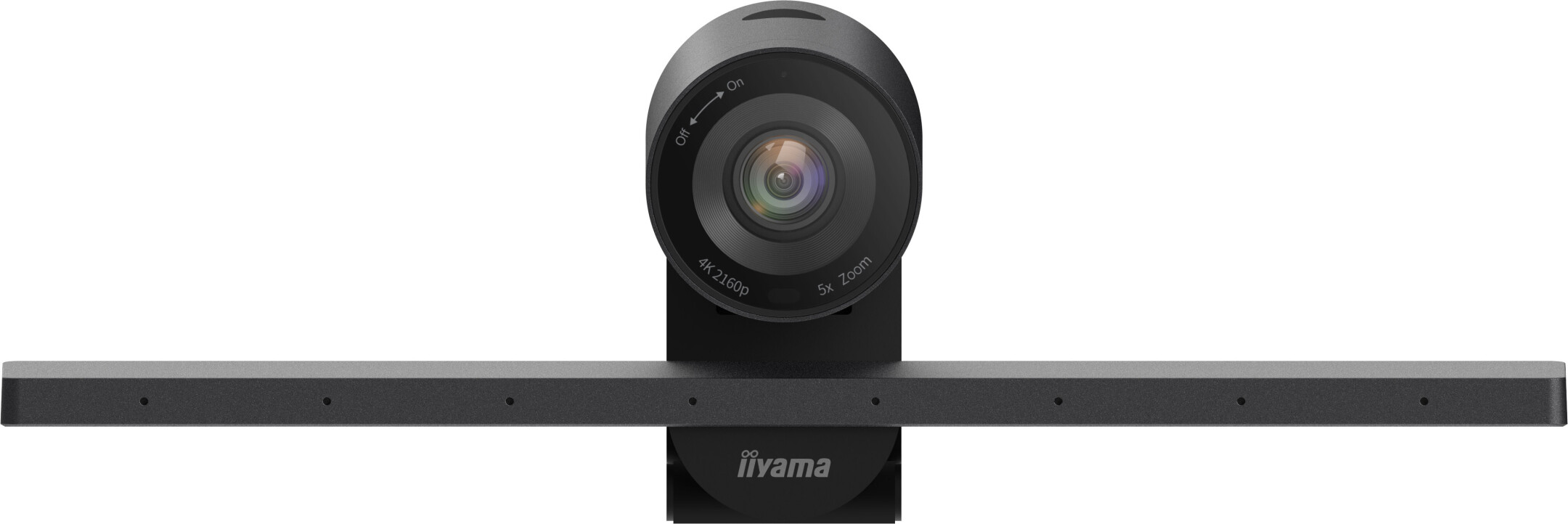



























£265.81*
- Resolution 3840 x 2160 4K UHD
- Camera resolution 8 MP
- Field of view 120°


Product information
The UC-CAM10PRO-MA1 is a professional webcam with 4K resolution, a 120° field of view (FoV) and speaker tracking. Auto-framing adjusts to the user's position to keep them in view at all times. Equipped with an impressive 5x digital zoom and integrated 8-microphone array, the webcam guarantees audio detection with a range of up to 8 metres away, so that all users can be easily seen and heard. Thanks to a 15° tilt adjustment, the webcam can be set to your needs and individual preferences. If you are particularly concerned about privacy, a manual privacy screen ensures that the webcam only sees you when you want it to. This lightweight solution is easy to set up and works in any environment, large or small, and supports all leading conferencing software such as Zoom, Skype, Microsoft Teams and others.
Field of view (FoV) of 120°
The field of view is the discernible area you can see through the camera lens. This is directly reflected in the size of the meeting room that will be visible to the remote participants. A field of view (FoV) of 120° is the right solution for most standard meeting rooms.
Digital 2D and 3D noise reduction
The combination of both image denoising technologies delivers incredible image quality and ensures clear and crisp visualisation of videos and images.
Auto-framing
Thanks to intelligent face recognition and voice localisation, the camera tracks the person who is speaking and switches smoothly between speakers, automatically adjusting to the optimal participant position and number. Meeting participants are not only recognised and zoomed in - they are also tracked as they move around the room.
Clear, crisp and natural audio
An advanced noise reduction algorithm uses an 8-element microphone array to detect sounds from up to 8 metres away and deliver high quality audio that is free from distracting background noise and distortion of any kind.
Easy setup
Seamless connection via Bluetooth, USB or audio cable. Once connected, the speaker is ready to use.
Compatibility
The camera is compatible with any conferencing software of your choice and offers hassle-free work with Zoom, Skype, Microsoft Teams and other programmes.
Technical data
| Name | iiyama UC-CAM10PRO-MA1 Conference Camera, 3840 x 2160 4K UHD, 8 MP, 30 fps, 120° |
|---|---|
| Article number | 1000028265 |
| GTIN/EAN | 4948570033157 |
| Manufacturer SKU | UC-CAM10PRO-MA1 |
| Model name | UC-CAM10PRO-MA1 |
| Brand | iiyama |
| Product Type | Conference Camera |
| Resolution | 3840 x 2160 4K UHD |
| Frames per Second | 30 fps |
| Focus type | Manual & automatic focus |
| Digital Zoom | 5 |
| Camera resolution | 8 MP |
| Field of view | 120° |
| Inputs | 1x USB-A , 1x USB-C |
| Product width | 30 cm |
| Product height | 8.5 cm |
| Product depth | 10 cm |
| Weight | 0.346 kg |
| Colour | Black |
| Delivery contents | Batteries , Power cable , Remote control |
| Condition | New |
| Warranty | 24 Month |
| Warranty type | Bringin service Service and support information |
Product safety
| Person responsible for the EU |
|---|
| iiyama International Corporate |
| Wijkermeerstraat 8 |
| 2131 HA Hoofddorp |
| Netherlands |
| info.de@iiyama.com |



